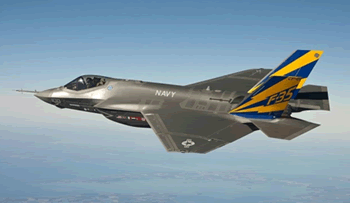An Industry Under Siege: How Much Defense is Enough?
An Industry Under Siege: How Much Defense is Enough?
In 2013, governments and defense agencies — from the US to China to the euro zone — are being asked to justify defense spending against a broad range of domestic priorities. Domestic demands for austerity and social investment are eroding previous commitment to high levels of defense spending  by many nations. Defense is still the first priority of many governments; however, it is becoming more difficult for the armed services and industry to plan in this budgetary environment.
by many nations. Defense is still the first priority of many governments; however, it is becoming more difficult for the armed services and industry to plan in this budgetary environment.
Worldwide military spending is on a downward trend, including a shift in defense spending patterns. According to SIPRI (the Stockholm International Peace Research Institute), the world’s governments spent approximately $1,753 billion on their militaries in 2012, about 0.5% lower than in 2011. Collectively, the top 15 countries were responsible for more than four-fifths of all military expenditure in 2012. The United States accounted for 39% of that spending with $682 billion, 5.6% less than 2011. China came in second at $166 billion (9.5% of total), and Russia followed at $91 billion (5.2% of total).
The distribution of global spending in 2012 shows what may be the beginning of a shift from the West to other parts of the world. In the US, Western, and Central Europe, austerity measures continue to reduce military spending. In contrast, nations with emerging economies are experiencing economic growth with lower levels of debt and are tackling regional security challenges with higher levels of defense spending. In Asia, military spending increased in 2012, although at a slower rate than in previous years. Russian military expenditure rose 16% and the Middle East and North Africa also saw significant increases.
New Realities in 2013
Financial pressure to do more with less comes at a difficult time for the US and its allies. India is spending billions of dollars upgrading its Soviet-era military hardware to bolster its defenses, as indicated by the unveiling of its first domestically produced aircraft carrier in August. Russia continues to intensify its military capabilities and China has rapidly expanded its naval and aerospace activities. Territorial disputes in East Asia and the Middle East are in danger of escalating into armed conflict. The Syrian civil war may well become a flashpoint in the near future.
 Cybersecurity continues to rise on the agendas of the military and international political communities, as cyber attacks against critical infrastructures are growing more sophisticated and complex. The Internet has become an indispensable global tool for business and government. However, with attacks on information networks increasing, its pervasive use has created new vulnerabilities in safeguarding information and protecting digital infrastructure. As instances of cyber attack become more frequent, countries are raising cyber defense to a higher level of national security.
Cybersecurity continues to rise on the agendas of the military and international political communities, as cyber attacks against critical infrastructures are growing more sophisticated and complex. The Internet has become an indispensable global tool for business and government. However, with attacks on information networks increasing, its pervasive use has created new vulnerabilities in safeguarding information and protecting digital infrastructure. As instances of cyber attack become more frequent, countries are raising cyber defense to a higher level of national security.
The United States is now financing nearly three-quarters of NATO’s military spending. In 2012, for the first time, military spending among Asian nations, in particular China, exceeded that of the Europeans. European countries have tried to plug gaps in their defenses and make stretched military budgets go further by working more closely together, but savings so far are small compared to cuts in defense spending. The concern is that Europe is not investing enough in defense to remain a viable military partner to the US.
Europe’s defense industry had sales of $126.9 billion in 2012, with Britain, France, and Germany representing 60% of the EU’s military expenditures. While Britain has the largest military in Europe, it is undergoing massive budget cuts. Germany is the only country of the big three not facing serious defense cuts and it has the potential to emerge as the biggest military in Europe.
Europe will gather its heads of state for a meeting in December intended to clarify the defense commitment of the EU. The focal point is “pooling and sharing not a single European army but shared cooperation among member states, and perhaps clusters of capabilities among various countries.” The EU has proposed to help Europe’s defense industry cope with pressure from falling military budgets by funding research and helping to develop new military technologies.
Proposed US FY2014 Defense Budget Clears Another Hurdle
The US defense budget proposal for FY2014 acknowledges that defense spending is intended to balance the protection of security interests against “declining budgets and fiscal uncertainty.” The primary focus has been to minimize capacity reduction, while increasing capability. With a reduced capacity, the US would operate with its technological capabilities intact, but would not be able to perform as many missions, due to a smaller military. With reduced capability, the US maintains a military of the same power projection and presence, but it is not as modernized.
The Senate Appropriations defense subcommittee unanimously approved a Pentagon spending bill that calls for a $516.4 billion base budget and a $77.8 billion Overseas Contingency Operations (OCO) war-funding section. The proposed FY2014 bill does not move onto the Senate’s floor until Congress reconvenes on September 9, 2013. After a final vote by the Senate, the individual FY2014 defense appropriations bills still must be reconciled and approved, before the President signs, and the budget becomes law. The services anticipate a $475 billion budget will remain after sequestration cuts for FY2014, which runs from October 1, 2013 to September 30, 2014.
Highlights of the Senate appropriations FY2014 defense bill include:
 Operations and Maintenance: The bill provides $178.6 billion for operation and maintenance, including substantial increases for readiness, depot maintenance, and facilities sustainment, restoration, and modernization. Sequestration in FY2013 has had a major impact on the readiness of combat units, delaying important modernization programs and disrupting routine work by furloughing thousands of civilian and military personnel. The FY2014 bill recommends increasing funding in several areas to minimize the further decline of readiness status and to begin recovery in targeted areas.
Operations and Maintenance: The bill provides $178.6 billion for operation and maintenance, including substantial increases for readiness, depot maintenance, and facilities sustainment, restoration, and modernization. Sequestration in FY2013 has had a major impact on the readiness of combat units, delaying important modernization programs and disrupting routine work by furloughing thousands of civilian and military personnel. The FY2014 bill recommends increasing funding in several areas to minimize the further decline of readiness status and to begin recovery in targeted areas.
Procurement, Research, and Development: Much of the DOD’s technology spending is found here. It has been estimated that total DOD electronics, information technology, and electro-optics spending is roughly 15% of the total DOD budget. The bill provides:
- $98.4 billion for procurement (an increase of $215 million over the request), including:
- Fully funds the 2014 procurement of 29 F-35 JSF but reduces advanced procurement for FY2015
- Fully funds the procurement of Army CH-47 Chinook and AH-64 Apache helicopters; Air Force C-130J Hercules; and Navy P-8 Poseidon, E-2D Hawkeye, and MV-22 Osprey
- Provides the requested amounts for procurement of Army Joint Tactical Radio Systems, Warfighter Integrated Network—Tactical Increment II, and Nett Warrior; Special Operations Command Warrior Systems and Operational Enhancements; and Marine Corps new-build G/ATOR radar systems
- Increases the Virginia-class submarine program by $227 million and the DDG-51 destroyer program by $100 million to fund 10-ship multi-year contract commitments.
- $65.8 billion for research and development ($1.7 billion below the request) including:
- Fully funds Air Force Long Range Strike bomber and KC-46 tanker; Navy Next-Generation Jammer and MQ-4 Triton UAV; and the Army/Marine Corps Joint Light Tactical Vehicle
- Limits funding to F-35 Joint Strike Fighter development to support necessary planning activities for follow-on development
- Terminates the Virginia Payload Module due to high cost, risk, and lack of validated requirement
Defense Industry Outlook
With the overseas wars winding down and budget sequestration beginning to bite into weapons spending, market analysts expected the defense sector results to be down. However, significant impact of US sequestration has yet to be fully realized, as seen by the positive results reported by the top players for the first half of 2013. This is largely due to technological innovation, big contracts, international orders, acquisitions, and growing commercial  demand. In addition, a pickup in defense spending in a number of new emerging markets, as well as in developed nations, have opened doors to US aerospace and defense companies. This trend should continue for the duration of the year.
demand. In addition, a pickup in defense spending in a number of new emerging markets, as well as in developed nations, have opened doors to US aerospace and defense companies. This trend should continue for the duration of the year.
Many of the major players in the defense sector have indicated they will continue to delay major investments, choosing to “repurpose” their existing products and services into adjacent markets and use acquisitions to improve the products and services they already deliver. Expect to see an increase in the number of partnerships and joint ventures developed, with new collaborations forming with non-aligned industries.
Competition in the defense industry will continue to become more global and intense. Given the financial and political instabilities in the US and Europe, military/aerospace interconnect market growth is expected to be marginal. While top-tier companies have survived the initial phase of sequestration, sub-tier suppliers are feeling the pain. New contracts have been small, with incremental releases, and minimal development content. The good news for connector suppliers is that the second half of the year historically generates more connector sales than the first half.
- State of the Industry: 2022-2023 Connector Sales - April 16, 2024
- Amphenol is On a Roll - April 2, 2024
- Nicomatic Proves That Two Heads are Better Than One - March 26, 2024

